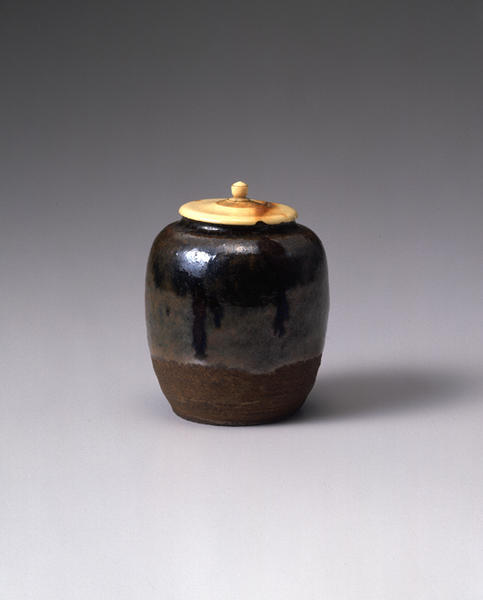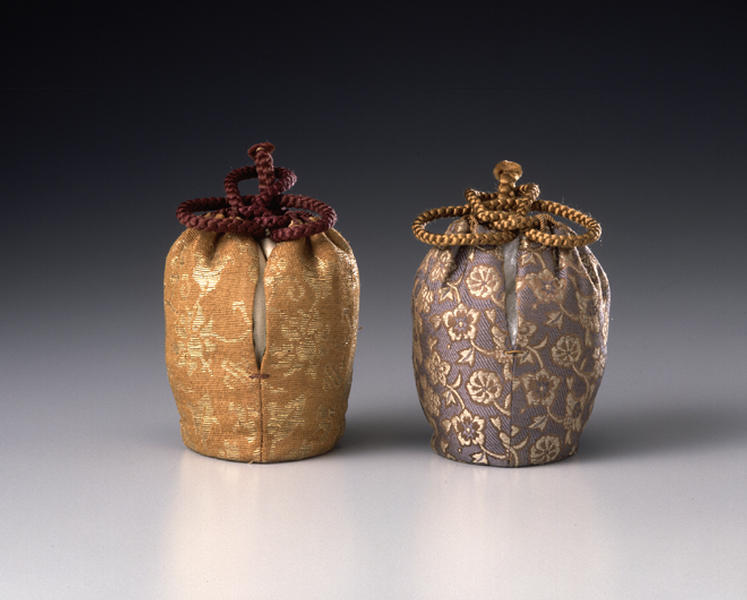Tea container, Imonoko type
- Seto kiln, Aichi pref.
- Momoyama period
- 16c
- Seto ware
- H-7 D-5.6
Catalogue Entry
Seto produces the largest number of tea containers in Japan. Shirozaemon Kagemasa Kato I (also referred to as Toshiro or Shunkei) is said to have traveled to China to study pottery making and brought the technology back to Seto to begin production. According to the classification of kilns in Seto producing tea containers, the imonoko (literally "baby tuber") type belongs to the Furuseto "Old Seto" style.
Chaki bengyokushu, a treatise on tea ware published in 1672, describes tea containers from Seto as follows: "This kind of tea container is primarily made out of pale red-colored clay with the surface covered with clear glaze. Some are made out of pale yellow clay. The mouth is upturned prominently. A reddish brown underglaze gives a particular surface quality called nashiji "pear skin," for the resulting texture is not unlike the slightly rough skin of a pear. The somewhat transparent black overglaze covers the top two-thirds of the container. This particular combination of the layers of glazes is called koshigawari "change at the waist" and is highly praised. The glaze streaming down the upper body is deep black.... It is comparatively rare to find large tea containers." This type of small tea container that has a short upturned mouth has been called imonoko "baby tuber" for its resemblance to a species of potato-like tuber cultivated in Japan. This one is also typical imonoko with regard to its form, size, and glazing style. It does not have a signature of the maker. It comes with two Shifuku bags for tea container.

